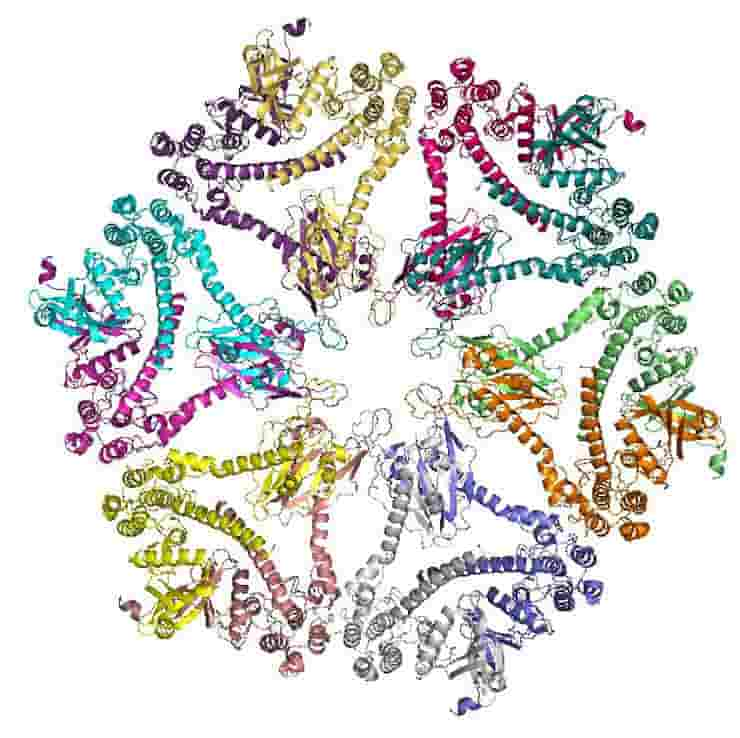Long-term potentiation (LTP), in neuroscience, refers to a persistent strengthening of synapses based on recent patterns of activity. These are synaptic activity patterns that result in a long-term increase in signal transmission between two neurons. Long-term depression, the inverse of LTP, results in a long-term decline in synaptic strength.
It is one of several mechanisms that contribute to synaptic plasticity, or the ability of chemical synapses to change strength. LTP is frequently considered one of the fundamental cellular mechanisms underlying learning and memory, since it is believed that changes in synaptic strength encode memories.
Terje Lmo discovered long-term potentiation in the rabbit hippocampus in 1966, and it has remained a hot research topic ever since. Many recent LTP studies strive to better understand its underlying biology, while others seek to establish a causal link between LTP and behavioral learning.
Forms of LTP
Since its discovery in the rabbit hippocampus, LTP has been reported in a variety of different brain areas, including the cerebral cortex, cerebellum, amygdala, and many others. According to Robert Malenka, a famous LTP researcher, long-term potentiation may occur at all excitatory synapses in the mammalian brain.
Different areas of the brain exhibit different forms of LTP. The specific type of LTP exhibited between neurons depends on a number of factors.
The age of the organism when LTP is observed is one such influence. For example, the molecular pathways underlying LTP in the juvenile hippocampus differ from those underlying LTP in the adult hippocampus.
The signalling pathways used by a cell also influence the type of LTP present. Some varieties of hippocampus LTP, for example, rely on the NMDA receptor, while others rely on the metabotropic glutamate receptor (mGluR), and yet others rely on another protein entirely.
The pre- and postsynaptic activity required to induce LTP are other criteria by which LTP is classified. Broadly, this allows classification of LTP into Hebbian, non-Hebbian, and anti-Hebbian mechanisms.
Borrowing its name from Hebb’s postulate, summarized by the maxim that “cells that fire together wire together,” Hebbian LTP requires simultaneous pre- and postsynaptic depolarization for its induction.
Non-Hebbian LTP is a type of LTP that does not require such simultaneous depolarization of pre- and postsynaptic cells; an example of this occurs in the mossy fiber hippocampal pathway.
Long Term Potentiation Mechanisms

Although the physical and biological mechanisms of LTP remain unknown, some viable models have been constructed. Due to their relationship with intracellular calcium transients, studies of dendritic spines, protruding structures on dendrites that physically grow and retract over the course of minutes or hours, have suggested a relationship between the electrical resistance of the spine and the effective synapse strength.
Since the 1980s, mathematical models like BCM Theory, which relies on intracellular calcium in relation to NMDA receptor voltage gates, have been developed to augment the traditional a priori Hebbian learning model with biological and experimental basis. Others, on the other hand, have suggested rearranging or synchronizing the link between receptor modulation, LTP, and synaptic strength.
Some evidence suggests that LTP is also expressed presynaptically, despite the fact that it is induced and expressed postsynaptically. Retrograde signalling is one hypothesis that attempts to explain this. Because normal synaptic transmission is bidirectional, from the presynaptic to the postsynaptic cell, the hypothesis derives its name.
In order to achieve postsynaptic induction and partial expression presynaptically, a message must traverse in the opposite direction, from the postsynaptic cell to the presynaptic cell. Upon reaching the destination, it is likely that the message triggers a series of sequential occurrences that culminate in a presynaptic aspect of expression, such as an elevated likelihood of neurotransmitter vesicle release.
In a 2011 study, researchers at Duke University Medical Center discovered a cascade of signalling molecules that allows a normally very brief signal to last for tens of minutes, providing the brain framework for stronger connections (synapses) that can summon a memory for months or even years.
The researchers were investigating the signalling molecules that regulate the actin cytoskeleton, which serves as the structural framework of synapses.
According to senior author Ryohei Yasuda, Ph.D., the signalling molecules could help to rearrange the framework, and give more volume and strength to the synapses. The team reasoned that a long-lasting memory could possibly come from changes in the building block assemblies.
The Duke researchers knew that long-term potentiation, a long-lasting set of electrical impulses in nerve cells, is triggered by a transient increase of calcium (Ca2+) ions in a synapse. They devised experiments to learn exactly how the short Ca2+ signal, which lasts only for ~0.1s, is translated into long-lasting (more than an hour) change in synaptic transmission.
The group utilized a method developed in the Yasuda lab, 2-photon microscopy, to observe molecular signalling within solitary synapses undergoing LTP. By employing this microscopy technique, the research group was capable of observing molecular activity within individual synapses, as well as quantifying the synapses’ volumetric expansion and connection strength.
They found that signaling molecules Rho and Cdc42, regulators of the actin cytoskeleton, are activated by Calcium/calmodulin kinase II (CaMKII), and relay a CaMKII signal into signals lasting many minutes. These long-lasting signals are important for maintaining long-lasting plasticity of synapses, the ability of the brain to change during learning or memorization.
References:
- Bliss T, Collingridge G, Morris R (2004). Long-term potentiation: enhancing neuroscience for 30 years. Oxford: Oxford University Press. ISBN 978-0-19-853030-5.
- Cooke SF, Bliss TV (July 2006). Plasticity in the human central nervous system. Brain. 129 (Pt 7): 1659–73. Doi: 10.1093/brain/awl08
- Hideji Murakoshi, Hong Wang, Ryohei Yasuda. Local, persistent activation of Rho GTPases during plasticity of single dendritic spines. Nature, 2011; DOI: 10.1038/nature09823
- Lømo T (1966). Frequency potentiation of excitatory synaptic activity in the dentate area of the hippocampal formation. Acta Physiologica Scandinavica. 68 (Suppl 277): 128.
- Malenka RC, Bear MF (September 2004). LTP and LTD: an embarrassment of riches. Neuron. 44 (1): 5–21. doi:10.1016/j.neuron.2004.09.012
- McEachern JC, Shaw CA (June 1996). An alternative to the LTP orthodoxy: a plasticity-pathology continuum model. Brain Research. Brain Research Reviews. 22 (1): 51–92. doi:10.1016/0165-0173(96)00006-9
- Yasuda H, Barth AL, Stellwagen D, Malenka RC (January 2003). A developmental switch in the signaling cascades for LTP induction. Nature Neuroscience. 6 (1): 15–6. doi:10.1038/nn985
